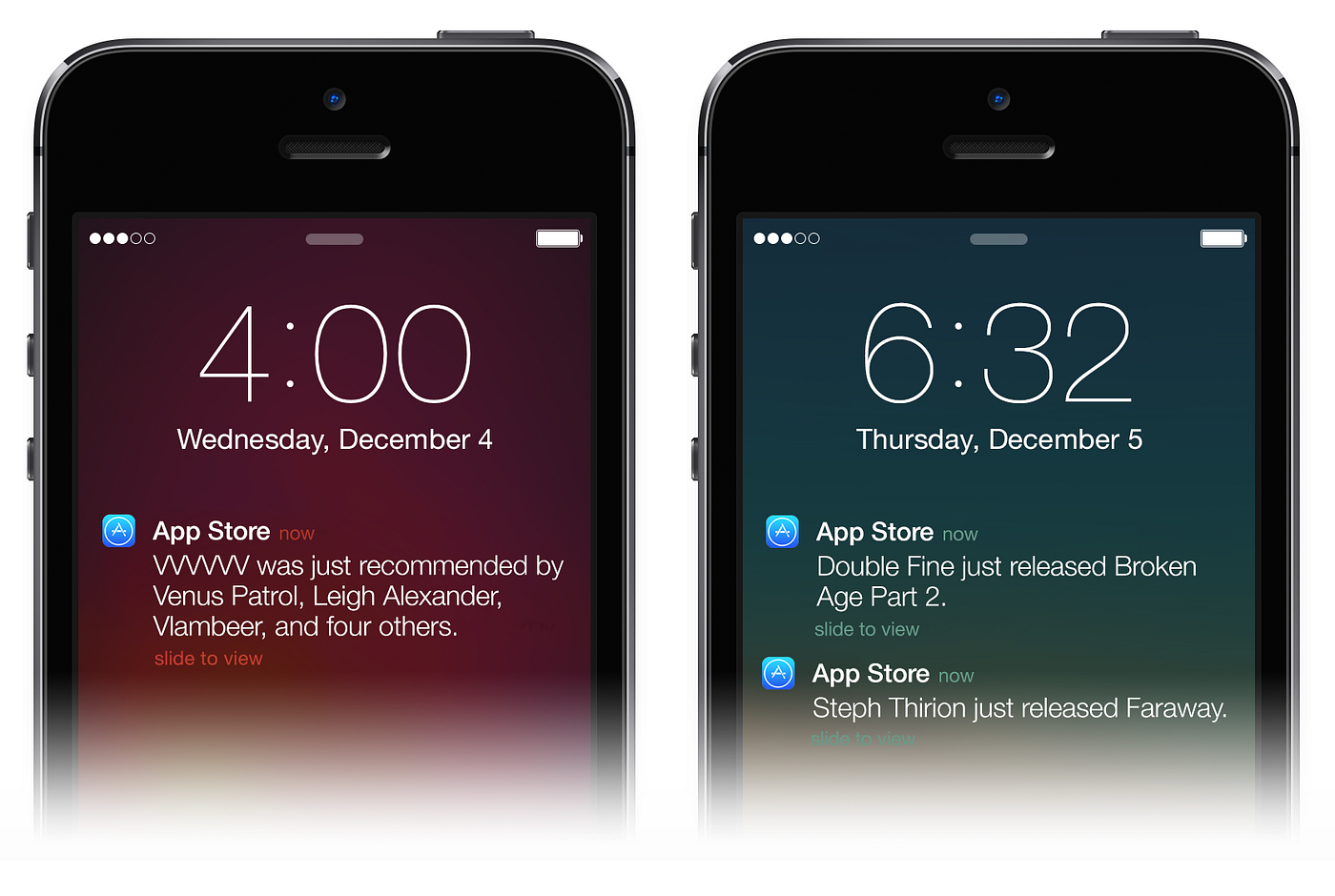I love indie games, and follow the indie game scene pretty closely. I read gaming blogs, follow dozens of game devs, and keep a close eye on interesting new releases for the festival I run every year.
But I can’t catch everything. So, last month, I was boarding a flight to NYC and asked for some recent iPhone game recommendations:
Within minutes, I’d loaded my phone with obscure and interesting gems suggested by dozens of people.
I’d already played the critically-lauded Monument Valley, Blek and Hitman Go. But many others were completely new to me—15 Coins, Kiwanuka, Power Grounds, Hoplite and Oquonie were all wonderful.
All of these underrated game were all buried in the App Store, hidden in plain sight for months, but it took Twitter to find them.
Next month, the iOS App Store turns six years old. In that time, iPhone and iPad owners have downloaded its 1.2 million apps over 75 billion times.
But how we discover apps has stayed virtually the same since its launch: editorial picks, sales charts, and search. We’ve been using the same set of tools to navigate the App Store since 2008.
What worked for 500 apps in 2008 doesn’t work for 1.2 million in 2014.
Apple’s created a remarkable distribution platform for developers, big and small, but discovery suffered as the number of apps has exploded.
300 million people visit the App Store every week, but they all see the same handful of apps—a selection hand-picked by Apple staff, along with a stagnant list of bestsellers.
Apple’s sole attempt at personalized recommendations—the painfully inadequate “Genius,” which recommended clones of apps you already installed—was phased out last year for the even-worse “Near Me,” showing the same location-centric apps to everyone in your city.

This one-size-fits-all model may have worked in the first year, but as the App Store has grown, it’s created an environment where discovering under-the-radar gems is impossible.
It’s especially frustrating to see developers compete with each other to win a zero-sum game—attempting to break into the sales leaderboards with exploitive free-to-play tactics, or hope that they win the App Store lottery with homepage placement.
Apple is hardly alone here.
Every major app store—the iOS App Store, Xbox Live Arcade, Nintendo eShop, PlayStation Network—serves the same set of editorial picks and charts to every member of their community.
Only two that I know of, Steam and Google Play, have experimented with personalized app discovery using the social graph. Google strictly relies on Google Plus for its recommendations, which is great if you’re an active Plus user. (Which you probably aren’t.)
Valve has dipped its toe into social recommendations for the Steam distribution network in the past, but they’re planning to expand the functionality this year, letting community members curate their own storefronts.
Getting Social
My hope is that Apple, and every other app store, can take a page from the last decade of the social web. Give its users a public identity, an incentive to share what they love, and the ability to find and follow others like them.
Find Friends

Like Twitter, these should be relationships where you can follow someone, without requiring approval the way friending people on Facebook does.
Bootstrap the social graph using iOS’s Twitter, Facebook, and address book integration, letting users find and follow users that recommend apps they like.
It’s not just about friends, but about following people, developers, or organizations that are finding and curating stuff you like.
Public Profiles
There’s an inherent expectation that app purchases are private, so automatically sharing that activity would be a massive privacy violation.
Instead, aggregate reviews and ratings on a public profile page. Add a simple, lightweight way to favorite apps, rather than requiring star reviews and purchases.
Each profile should have a “Follow” button and follower count, and apps you’ve favorited or reviewed appear on your profile, letting individuals or companies curate apps they love for their followers.
Likewise, every App Store developer should have a profile, listing the apps they’ve published and giving their fans a chance to be immediately notified when new apps are released.
Discovery

Finally, with the social graph in place, it would be possible to replace the “Near Me” section of the App Store with something relevant and personalized—a timeline view of shared apps, reviews, and ratings from people you follow.
Alternate views could show trending or popular apps from people you follow.
Push notifications could announce trending apps from people you follow, or alert you when a developer you follow has released a new app.
It’s upsetting to see the incredible work of so many independent developers get lost in the sea of apps, with so little assistance provided by Apple to find them.
Apple is using discovery methods from the age of brick-and-mortar bookstores and videogame shops—shelves of staff picks and bestseller lists are useful, but they’ll never be able to expose more than the very surface of what’s in the App Store.

The failure of Ping may have left Apple scared of taking this on, but that would be a mistake. Ping failed because of bad execution, and a failure to iterate, not because it was a bad idea.
Social discovery isn’t going away, and it’s the best chance of making sure every wonderfully underseen gem finds its audience.
